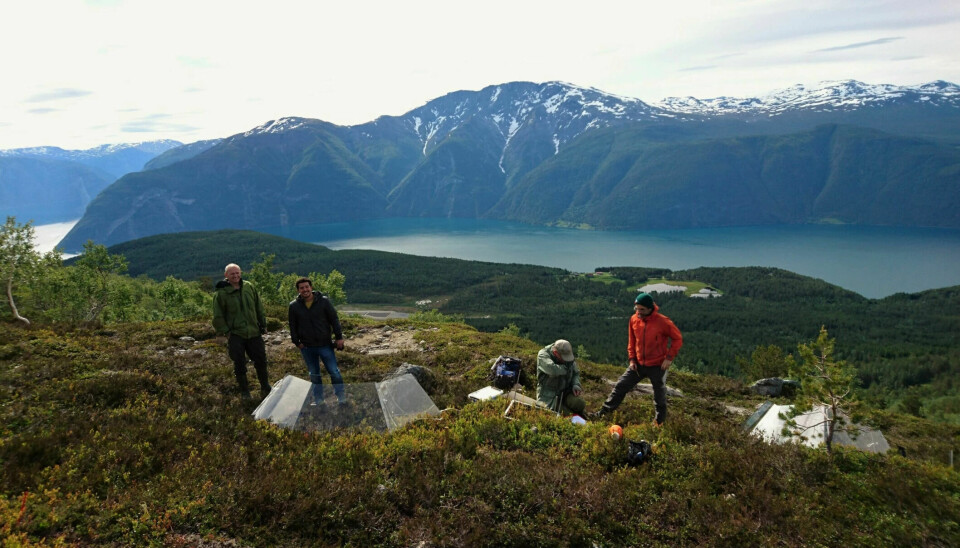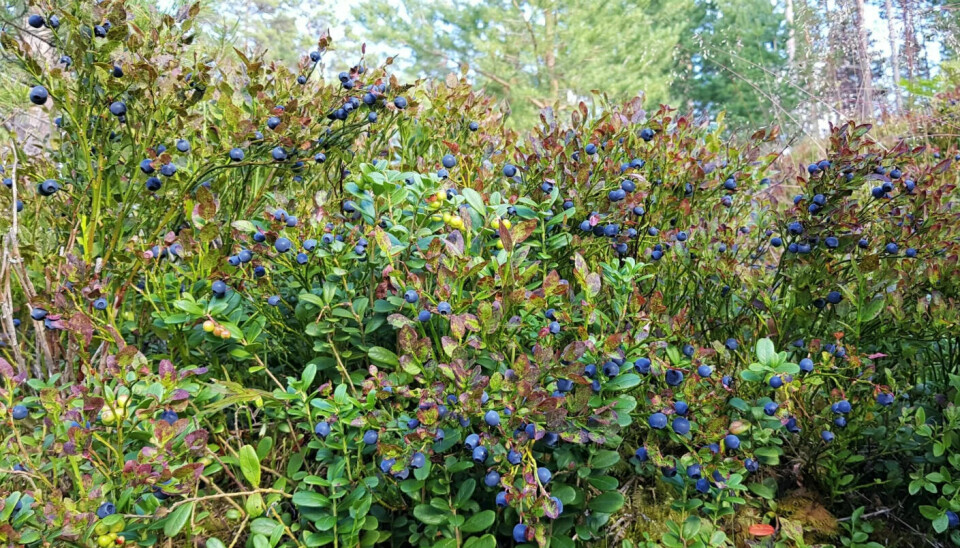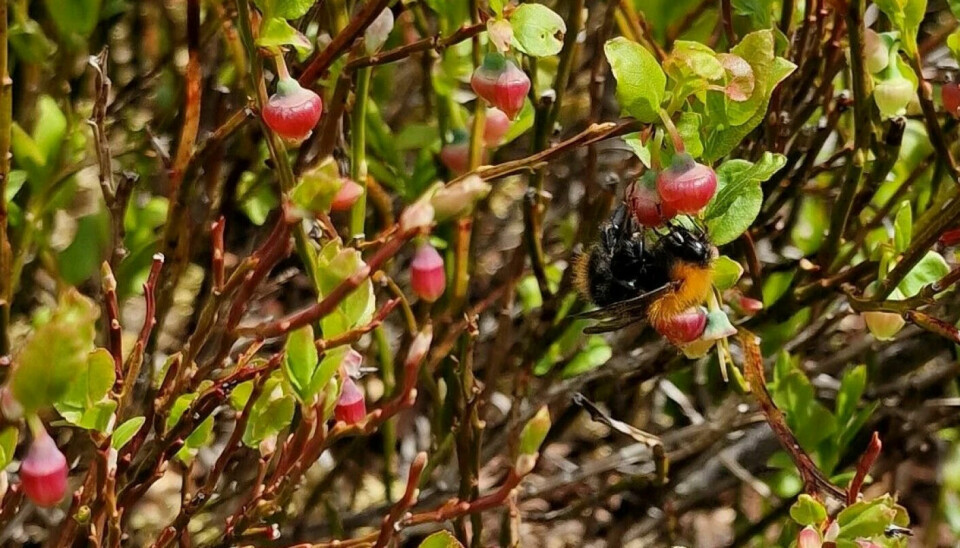
Will we be able to pick blueberries in the lowlands in the future?
Blueberries are being monitored year by year. Researchers in several countries are observing how a warmer climate affects the berries.
Norwegian researchers are also curious about how climate changes will affect the blueberry seasons in the coming years.
For several years, ecologists have been monitoring a small area along the Sognefjord, near Kaupanger. There, they study in detail how blueberries and lingonberries grow.
The researchers conduct experiments where they heat up certain areas with small greenhouses. They compare these areas with natural areas that are not heated.
“We count flowers, berries, and bees,” researcher Stein Joar Hegland says. He is an ecologist at the Western Norway University of Applied Sciences.
Can become too warm
The researchers examine areas at different altitudes. The greenhouses are located 100, 500, and 900 metres above sea level.
They do this to study how warming in different areas affects pollination and the number of berries produced.
“So far, we haven’t collected enough data to draw conclusions. But we know from research and experience that climate has a significant impact on berry production,” Hegland says.
More droughts threaten the berries
This is shown, for example, by a study from Maine, USA.
There, researchers have analysed data going back 40 years.
They observe that the temperature increase has made areas where wild blueberries grow much drier. Less water results in fewer berries, according to the researchers interviewed in the New York Post.
Maine is home to the only commercial producers of wild blueberries in the United States.
Long time series is needed
Preliminary results from the Sognefjord also indicate that a warmer climate negatively affects the growth of blueberry plants.
“This is a species adapted to our northern ecosystems. With a warmer climate, it may become too hot for blueberries in low-lying areas,” Hegland says.
Based on the experiments, it appears that lingonberries are less affected by climate change than blueberries, regardless of the altitude they grow at, the researcher explains.

“In the mountains, warming has a different effect. There, warming can be more positive for blueberry plants. But regardless, the climate is much more variable, so berry production will naturally vary greatly from year to year,” he says.
The ecologist is curious about how blueberries will fare in the lowlands of central Eastern Norway as the climate gets warmer. For now, he does not want to make any definitive statements.
“This is long-term research that requires long time series to draw conclusive results,” he emphasises.
Blueberries will not disappear
One thing that is certain is that we will always find blueberries in Norway, Hegland says.
Blueberries grow almost everywhere. The diversity in nature that we have in this country means that it will always be possible to go somewhere and find these nutritious berries, he adds.
“When journalists call me and ask how the berry season will be, I can only answer that it depends on where they are. It’s impossible to answer for the whole country. What’s great about Norway is that you will always find a place with blueberries,” he says.
However, the amount of berries will vary greatly from year to year.
Blueberry's sex life
Some blueberry years are much better than others, and some are completely catastrophic, according to the researcher.
All of this is related to the blueberry plant's sex life.
What happens during flowering is most important. Two factors are crucial, Hegland argues.

The first is the temperature, as it directly affects how many flowers develop.
The second factor is the conditions during pollination.
“Pollination is mostly done by the queen bumblebee. She flies from flower to flower, carrying the pollen with her,” he says.
Although the queen bumblebee can fly in cold weather, she will fly shorter distances and less during a cold spring. This can affect the number of flowers that get pollinated.
Varied season this year
This year, it has been cool in April and May in many parts of Norway. These are the two most important months for the flowering of blueberry plants.
But even though it was cold, there weren't many nights with frost. Those are the ones that have catastrophic consequences. A warm April with early blooming followed by frost is the worst thing that can happen to blueberry lovers. It kills the flowers.
“I hope it didn't happen in many places this year. Many places were probably cold, but maybe didn’t have many frost nights,” Hegland says.
Nevertheless, his impression is that there is some variation in berry abundance this year. Some places have quite a lot, while others have nothing.
———
Translated by Alette Bjordal Gjellesvik.
Read the Norwegian version of this article on forskning.no
------





































